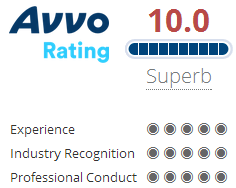Los Angeles doesn’t have the best public transport system for getting home after a night of drinking. However, drinking and driving to avoid public transportation is not something a judge will understand. If you have been drinking and decided to drive yourself home, you must ask yourself, what are the field sobriety tests used in DUI cases?
Sobriety tests are agility tests administered by police officers if they have suspicions you have been driving under the influence after a traffic stop. The officer will need reasonable doubt that you are driving under the influence before stopping you in traffic. If based on the results of field sobriety tests (FSTs), the officer believes you were driving under the influence, you will be apprehended.
Many people believe that poor performance in FSTs is a clear indication of drug or alcohol intoxication. However, this is untrue. The tests are not for gathering evidence to prove intoxication. Instead, they demonstrate probable cause for the DUI arrest. There are several ways an officer can determine your level of intoxication by three standard FSTs recommended by the NHTSA.
If you have any anxieties about your performance on these agility tests, Jonathan Franklin DUI Attorney is here to ease your worries. Our attorneys will offer help with any DUI issue you are facing. DUI arrests always come with a lot of anxiety, and the best thing you can do at a time like this is to have an experienced legal team protecting your interests and rights.
Essentials of Field Sobriety Tests
Field sobriety tests, also known as roadside sobriety tests, are a DUI law enforcement tool and are usually administered before the Breathalyzer tests. If an officer has reasonable suspicion that you are driving under the influence, you will be stopped and requested to perform a three-part field sobriety test. The tests intend to help the arresting officer observe your balance, attention levels, physical ability, and other things that can help demonstrate that you have been drinking and driving.
Your performance in FSTs is recorded and used as discovery in your DUI case. Mainly, these tests are used by the officer to establish probable cause for an arrest. Remember that even if the chemical tests proved that you had a BAC beyond the designated limit, the evidence would not be admissible in court if the officer had no probable cause for the arrest. For this reason, FSTs play a critical role in your DUI case.
Field sobriety tests in California are optional. As a driver, you can decline these tests without facing any legal consequences. Refusing these tests is essential because even a sober driver might perform poorly for reasons not related to alcohol levels beyond the designated limit. A driver wrongfully arrested for drunk driving may be forced to defend against wrongful:
- VC 23152(a) charges – Driving under the influence
- VC 23152(b) charges – Driving with a blood alcohol content of .08 percent
- VC 23152(f) charges – Driving under the influence of drugs (DUID)
- VC 23140 charges – Underage DU
For a better understanding of FSTs, we have highlighted the standardized FSTs endorsed by the NHTSA below:
1. The Walk and Turn
The walk and turn, sometimes known as the WAT, nine-step, DUI straight line, or nine-step walk turn test, is a divided attention FST. The test intends to test your mental and physical concentration at the same time. The officer conducting the test knowingly tries your ability to listen, follow, and remember instructions while executing several physical movements.
According to NHTSA, WAT tests are 79 percent accurate in determining 0.08% BAC and therefore carry a prodigious deal of weight, especially when used together with the two other standardized FSTs.
The NHTSA authority provides the guidelines or instructions officers should follow when administering WAT tests for accurate results. The steps include:
- Taking nine heel-to-toe steps on a line
- Pivoting around
- Taking nine heel-to-toe steps back
Note the officer must demonstrate the steps first for accurate results. When performing this movement, the officer will observe you for particular clues or behaviors. For each indication observed, officers assign you a point even if you repeat the same action more than once, up to a maximum of nine points.
The clues the officer focus on include:
- Inability to maintain balance while following instructions
- Starting the test too soon
- Stopping in the middle of the test
- Missing heal-to-toe
- Moving off the line
- Utilizing arms to maintain balance
- Doing the turn wrongly
- Taking an incorrect number of steps
- Danger of Falling
In case you demonstrate any of the following clues, the officer will score a point. If you experience difficulties with the test, the officer will request you to redo the test. However, this time you will not start from the first step. Instead, you will start from where the test started becoming difficult.
The Horizontal Gaze Nystagmus (HGN) Test
HGN refers to the uncontrolled twitching or nystagmus of the eye that happens naturally if the eye gapes horizontally or to the sides. The involuntary twitching is hyperbolic when you are under the influence, which is why officers administer this test to determine if you are driving under the influence.
During this test, the police officer will hold a pen or finger and ask you to focus on it as they move it from side to side. When doing this, the officer will be looking out for the angle at which your pupil begins to exhibit involuntary jerking. If you start showing nystagmus at an angle of 45 degrees, it indicates high BAC.
As per NHTSA research, 88 percent of the time, the tests accurately determine when your blood alcohol levels are .08 percent or higher.
2. The One Leg Stand (OLS) Test
After the WAT test, the second divided attention test is the one-leg stand. During this test, the law enforcement officer requests you to lift one foot six inches above the ground and hold it still. You will then be required to count from one thousand and one to one thousand and thirty or count for thirty seconds. Swaying, utilizing arms to balance, vaulting, or lowering your foot to the ground are indicators of impairment.
Failure in any of the three tests will subject you to a Breathalyzer test to establish whether your blood alcohol concentration is beyond the designated limit before apprehension.
Standardized FSTs Field and Weather Conditions
The NHTSA requires field sobriety tests to be administered in safe conditions. However, police officers do not always adhere to these conditions making it unreasonably challenging to perform the tests.
There are no definite conditions or procedures officers must adhere to when administering these tests. Nonetheless, court actors will want to see that the officer administered the tests under reasonable conditions. The conditions include:
Surface Setting
The court would be satisfied that the tests were administered relatively and in safe conditions, if they took place on a dry, hard, non-slippery, and level surface where you, as the suspect, are not in danger of falling.
Furthermore, you should have ample space to perform or complete the tests. If the traffic stop spot doesn’t provide the right surface settings or conditions, the officer should move you to a better location where you are in no danger of falling.
Demarcation Setting
A test like WAT requires a line that you can see. If a natural one isn’t available, the officer should draw one on the dirt. If only a sidewalk is public, the officer should use chalk to draw a line.
Light Conditions
The police officer administering the test must ensure there is sufficient lighting. Lighting is deemed to be adequate if you can see both the ground and the officer. If the light is insufficient, the officer can utilize a flashlight to illuminate the earth.
Note that the test results will be invalid if administered in total darkness because even a sober individual will have trouble completing a test.
Auditory Conditions
Not every time a suspect fails to follow instructions is an indication of intoxication. If the auditory settings of the place where the test is being administered are not right, you will have difficulties hearing the officer's instruction even when sober. The officer should move you to a more quiet or suitable location if the current place is full of noise disturbance like honking and sirens.
The judge or jury will believe the arresting officer’s testimony if it is clear that the settings where the tests were administered were fair and practical.
Accuracy of Standardized Field Sobriety Tests
On the issue of accuracy, a 1998 study cited by the NHTSA shows that the three standardized FSTs accurately indicate 91 percent alcohol intoxication in all DUI cases. If the court’s explanations for false positives are allowed, the tests have proven 94 percent accurate. The accuracy or correlation is only possible if:
- The officer administers the tests in a recommended and consistent way
- Uniform clues or behaviors are utilized to evaluate a suspect’s performance
- A consistent procedure is used to construe the procedures
If any of these aspects are absent, the validity of these tests is compromised.
Fighting DUI Charges Utilizing Standardized FST Results
There is a common belief by many people that sobriety tests are a definitive indication of driving under the influence. However, this is false. You can perform poorly in these tests even when sober. The tests help establish probable or reasonable cause for a DUI arrest. Several factors other than intoxication can explain the poor test results.
If you perform poorly and are arrested for drunk driving, you can rely on the tests’ results to contest the charges. Some of the reasons a DUI or criminal defense attorney can utilize to show the test results are inaccurate include:
1. Body or Mental Related Impairments or Conditions
Mind or body impairments other than those caused by drugs or alcohol can cause you to do poorly in these tests. Suppose you are 60 years or older. You are likely to do poorly in these tests because of body part issues, being obese, sickness, and other body problems. Suppose you have back, foot, inner impairments, are nervous, in pain, or intimidated. You will perform poorly.
Similarly, if you have a mental condition like mild brain damage or mental disability, your performance in these tests might be lacking.
2. Unfitting Attire
The attire you have on can affect the FST results. Some of the inappropriate clothing for sobriety tests include dress shoes, high heels, tight shoes or pants, baggy pants, gloves, or any other attire that inhibits your turning capability at the time of testing.
Environmental Conditions
Particular conditions like insufficient lighting, slippery surface, unleveled surfaces, a distraction from traffic lights, honking, spectators, and inclement weather can compromise the validity of sobriety test results.
3. Improper Timing
For many sobriety tests, timing is of great essence. The arresting officer must observe you for sometime before any of the tests. Additionally, the FSTs must take a standard time to complete. If any of these conditions are absent in your case, you can contest the FST results.
4. Officer Movement
Distractive behavior can affect your performance in sobriety tests. Therefore, officers are encouraged to remain motionless throughout because any movement is distractive behavior. If an officer made distractive motions during the test, it could be a basis for contesting the test results.
5. Vague Instructions
The instructions the officer issues to you must be precise for you to execute them accurately. This is mandatory, whether verbally or by visual demonstration. If the instructions are not exact, you can claim that they are the reason for the poor performance, which will weaken the officer’s testimony in court.
It’s worth noting that although sobriety tests are legal, they aren’t mandatory. You can choose to decline the tests, but politely. Passing the tests doesn’t keep you from apprehension. They are tool officers use to establish probable cause for an arrest.
By the time an officer requests the test, they have probably decided that you are driving under the influence and only want to gather evidence. Therefore, the best thing to do is respectfully decline the tests.
Find an Experienced DUI Attorney Near Me
Sobriety tests are one of the tools used by law enforcement to establish probable cause for drunk driving arrests. If you have failed these tests because they were conducted improperly, there is a possibility you could get the charges dropped. However, you need to act fast and enlist an experienced attorney’s services for a favorable outcome.
Jonathan Franklin DUI Attorney is here to help you fight drunk or drugged driving charges in Los Angeles, especially where FST results are the primary evidence. Call us today at 323-464-6700 for a free consultation.














